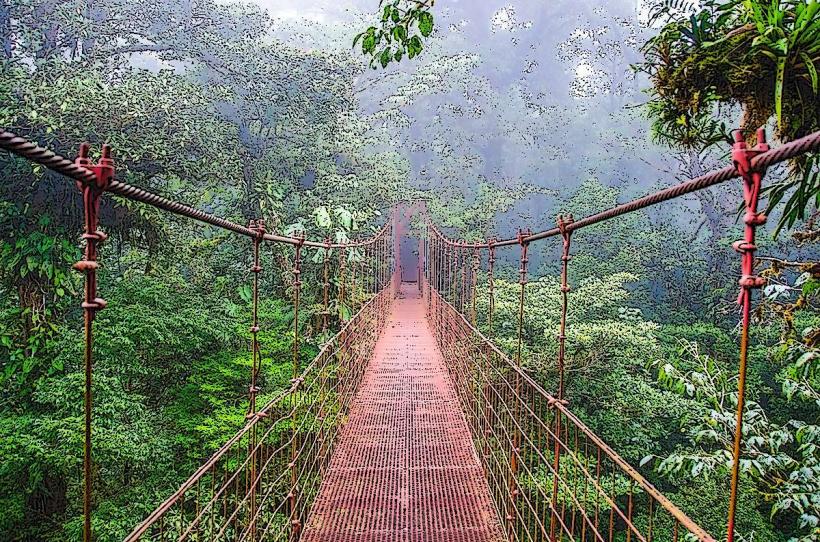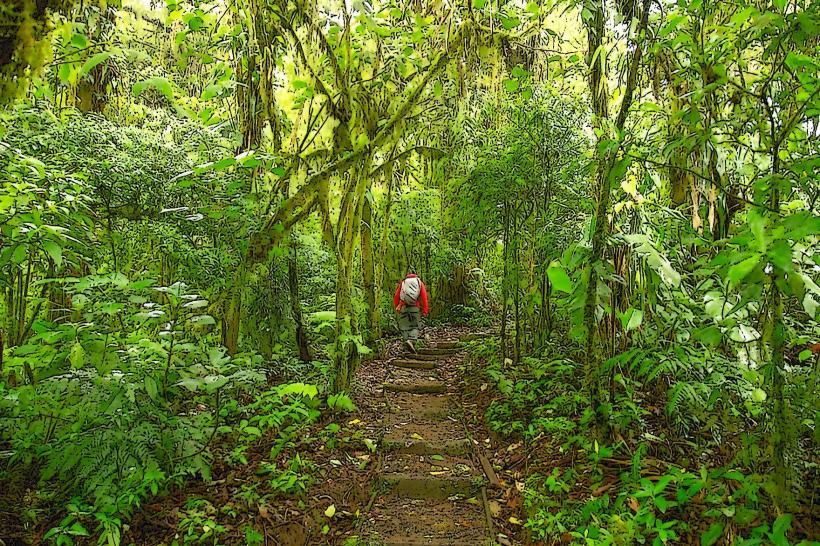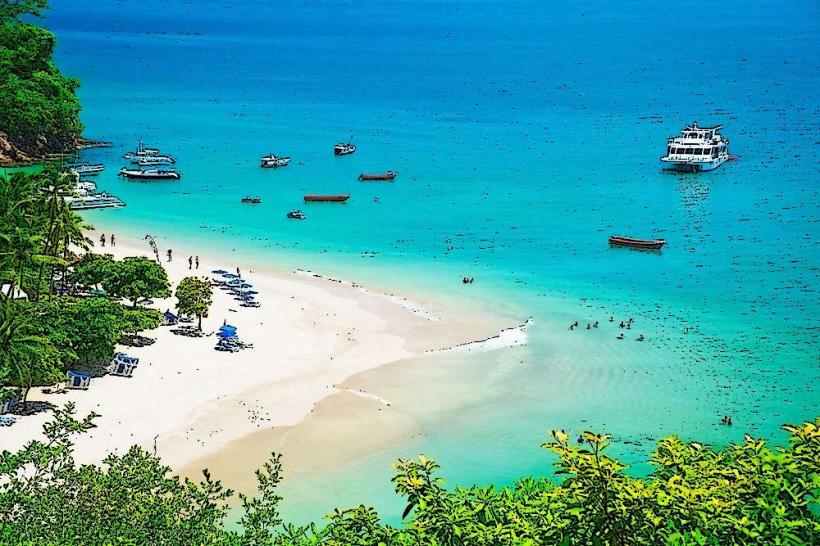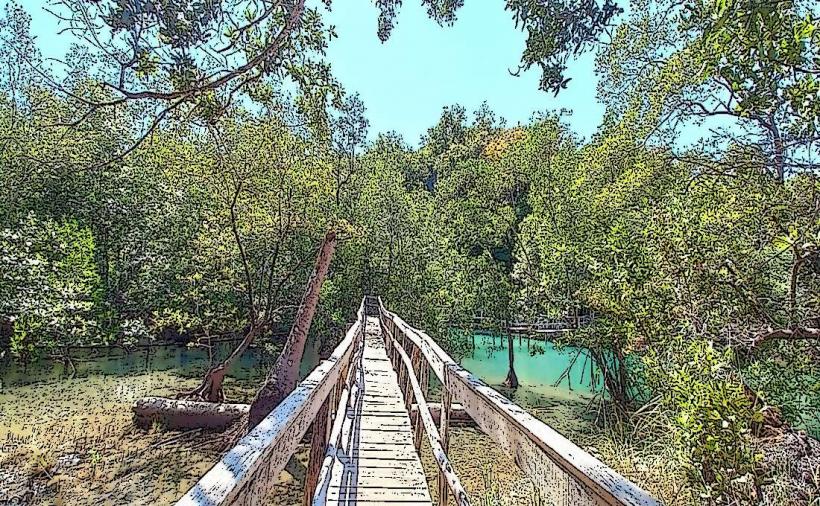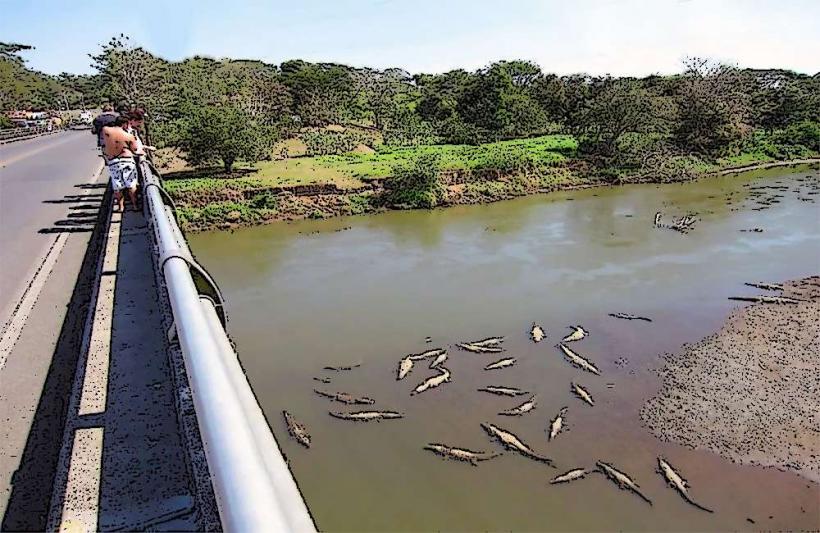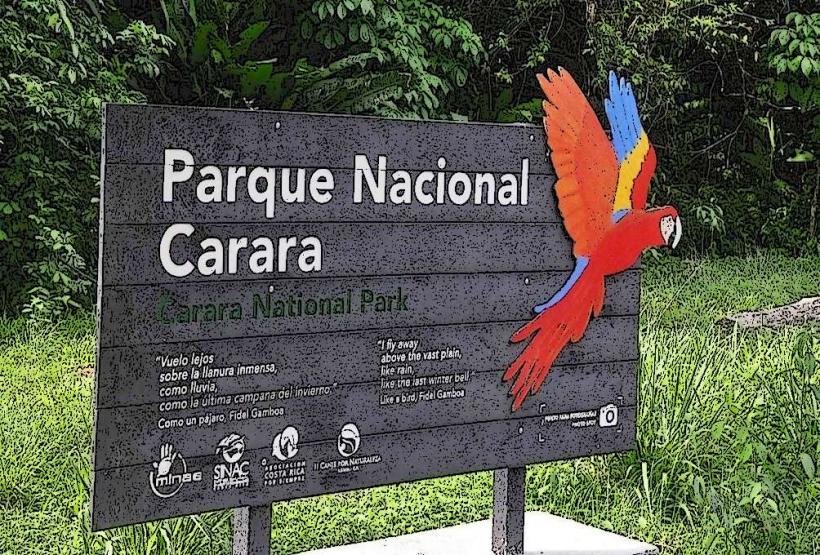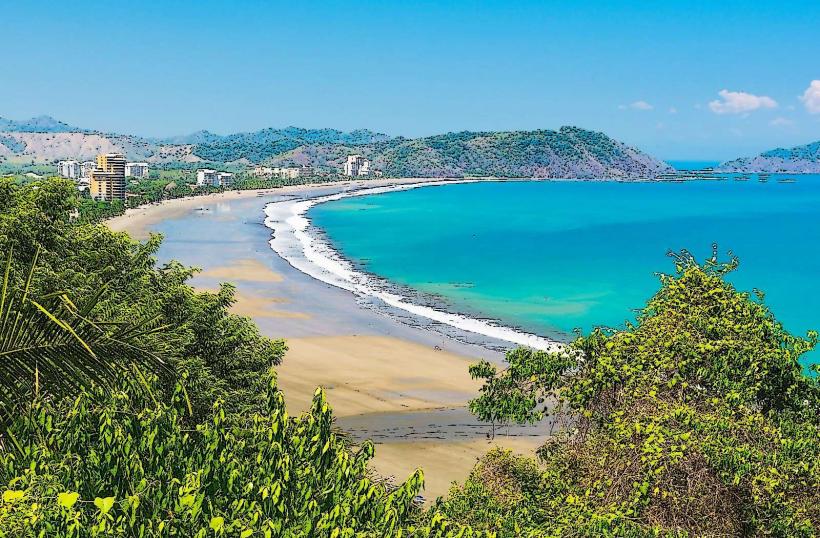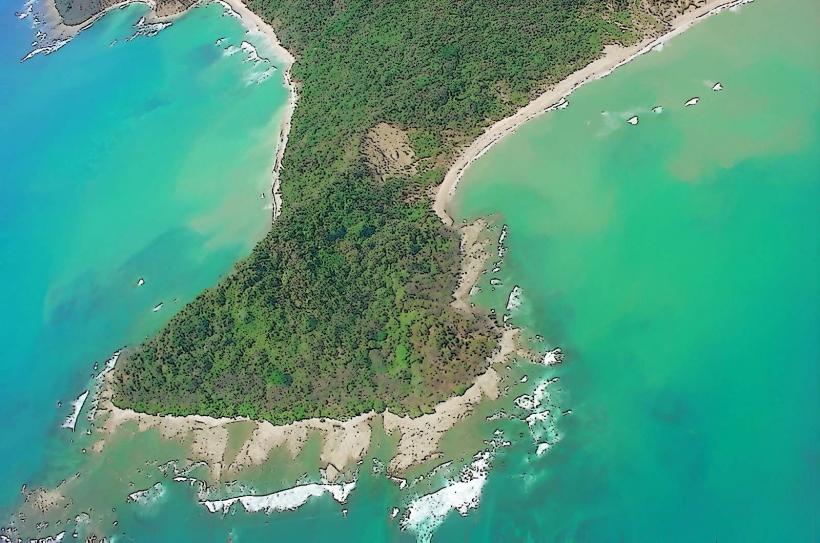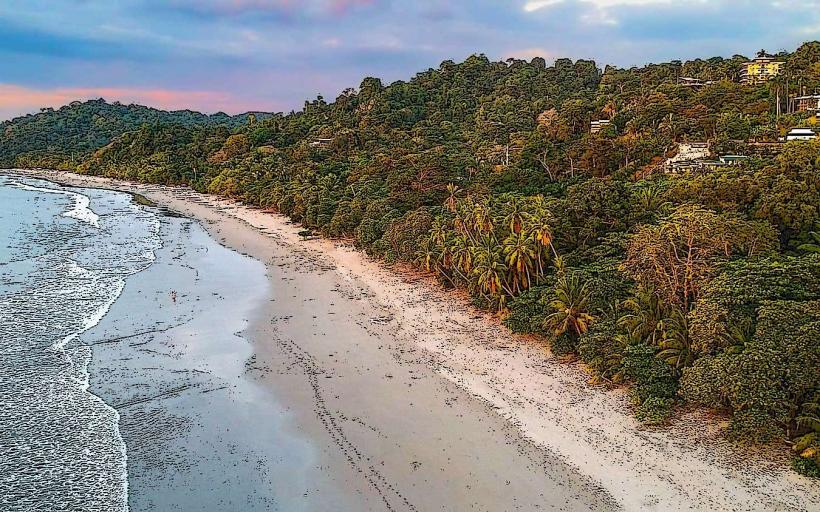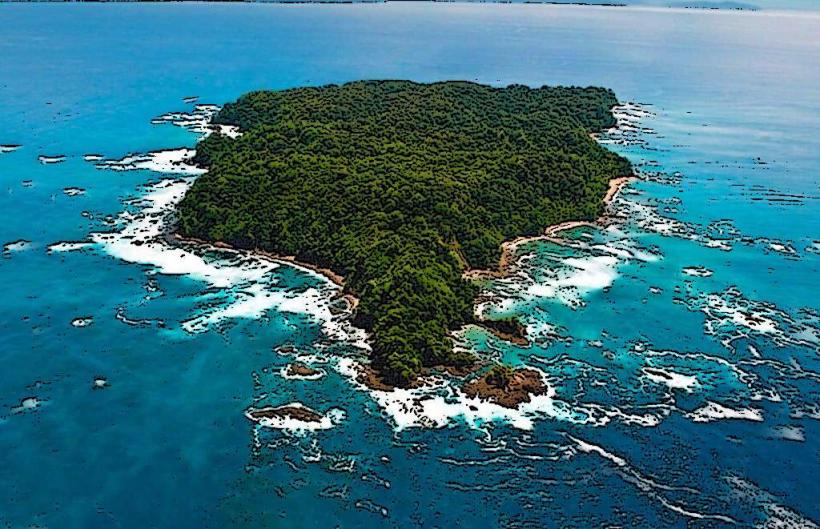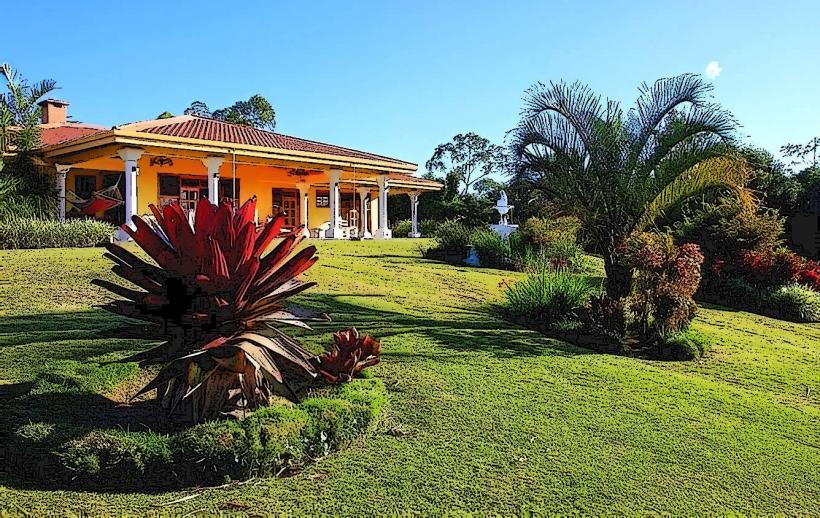Information
Landmark: Manuel Antonio National ParkCity: Puntarenas
Country: Costa Rica
Continent: North America
Manuel Antonio National Park is one of the most famous and visited national parks in Costa Rica, known for its stunning beaches, rich biodiversity, and easy access to both natural and wildlife experiences. Located along the central Pacific coast, the park offers a mix of lush rainforests, dramatic cliffs, white-sand beaches, and crystal-clear waters. It is a must-visit destination for nature lovers and adventure seekers.
Overview
- Location: Central Pacific Coast, Puntarenas Province, Costa Rica, near the town of Quepos.
- Established: 1972.
- Size: 1,983 hectares (around 4,900 acres).
- Type of Park: A national park that includes rainforest, beach, and marine ecosystems.
- Access: The park is easily accessible from the town of Quepos, which is about 7 kilometers away. It can be reached via a short drive from the nearby Juan Santamaría International Airport (SJO) or Manuel Antonio Airport.
Key Features
- Beaches:
- Manuel Antonio National Park is famous for its pristine beaches, which are some of the most beautiful in Costa Rica. The three main beaches within the park are:
- Playa Manuel Antonio: A stunning crescent-shaped beach with soft sand, calm waters, and a backdrop of lush rainforest. Ideal for swimming and sunbathing.
- Playa Espadilla Sur: A more secluded beach, perfect for those seeking tranquility and less crowded spots.
- Playa Gemelas: A hidden gem with turquoise waters and surrounded by forest.
- Manuel Antonio National Park is famous for its pristine beaches, which are some of the most beautiful in Costa Rica. The three main beaches within the park are:
- Biodiversity:
- The park is home to a wide variety of wildlife, including monkeys, sloths, squirrels, iguanas, marine life, and over 350 species of birds.
- Some notable species include:
- White-faced capuchin monkeys.
- Howler monkeys.
- Spider monkeys.
- Two-toed sloths.
- Tropical birds, such as scarlet macaws, toucan, and hummingbirds.
- Marine life, including sea turtles, dolphins, and whales (during migratory seasons).
- Rainforest Trails:
- The park features a network of well-maintained trails that wind through rainforest, offering excellent opportunities to observe wildlife and enjoy the lush surroundings.
- Trails range from easy walks to more moderate hikes and include:
- Sendero Principal (Main Trail): A popular and relatively easy trail that leads to Playa Manuel Antonio.
- Sendero Punta Catedral: A more challenging trail that provides panoramic views of the park and surrounding coastline.
- Sendero Perezoso: Known for its sloth sightings.
- Marine Ecosystem:
- The park also has a marine section, which includes coral reefs and rocky islands. The surrounding waters are excellent for snorkeling, and visitors can spot tropical fish, rays, and sea turtles.
- The marine environment is protected, with efforts made to preserve the area’s marine life and coral ecosystems.
Activities
- Wildlife Watching:
- The park is a top destination for wildlife enthusiasts. Guided tours are available, allowing visitors to spot animals like monkeys, sloths, and exotic birds. The park’s trails offer easy access to various habitats.
- Beach Relaxation:
- The park’s beaches are perfect for relaxing, swimming, or picnicking. Many visitors spend time lounging on Playa Manuel Antonio or Playa Espadilla Sur.
- Snorkeling and Swimming:
- The calm, warm waters of the park’s beaches make them ideal for swimming and snorkeling. The coral reefs are home to diverse marine life, including colorful fish and rays.
- Hiking:
- There are several hiking trails that vary in difficulty. The Punta Catedral Trail is one of the more popular ones, offering an uphill climb and rewarding views of the coastline.
- Kayaking and Stand-Up Paddleboarding:
- Explore the coastline by kayaking or stand-up paddleboarding. Guided tours are available to paddle along the park’s waters and nearby islands.
- Guided Tours:
- Many visitors opt for guided tours, which enhance the experience by providing expert knowledge about the park’s ecosystems and wildlife. Guides can help spot hidden animals and share insights into the park’s history, flora, and fauna.
Visitor Information
Opening Hours:
- The park is open daily from 7:00 AM to 4:00 PM.
- It is recommended to visit early in the morning to catch the best wildlife sightings and avoid the midday heat.
Admission Fee:
- The entrance fee for foreign visitors is generally around $18 USD for adults, and there may be discounts for children and Costa Rican residents.
Guided Tours:
- It is recommended to take a guided tour to fully appreciate the park's biodiversity and learn more about the flora and fauna.
Facilities:
- There are visitor facilities, including a visitor center, restrooms, picnic areas, and a small café near the park entrance.
Getting There
- From Quepos:
- The park is located about 7 km from the town of Quepos. A short drive or taxi ride will take you from Quepos to the park entrance.
- From San José:
- The drive from San José takes approximately 2.5 to 3 hours by car, following the Costanera Sur Highway (Route 34).
- Public Transport:
- Regular buses run from San José to Quepos, where you can then take a taxi or public bus to the park.
Best Time to Visit
- Dry Season (December to April):
- The dry season is the best time to visit, as the weather is sunny and ideal for hiking, beach activities, and wildlife watching.
- Green Season (May to November):
- While the green season brings lush vegetation and fewer crowds, it is also the rainy season. Expect afternoon showers, but mornings are usually sunny and great for outdoor activities.
Nearby Attractions
- Manuel Antonio Beach:
- Aside from the beaches inside the park, Manuel Antonio Beach outside the park is another popular beach for swimming and sunbathing.
- Quepos:
- The town of Quepos offers dining, shopping, and vibrant nightlife. Visitors can also enjoy local markets and galleries.
- Damas Island:
- Located nearby, Damas Island is known for its mangrove forests and offers opportunities for kayaking, wildlife watching, and exploring hidden waterways.
- Rainmaker Conservation Project:
- A private reserve located near the park, offering hiking trails, hanging bridges, and an immersive nature experience.
Conclusion
Manuel Antonio National Park is a must-visit destination for anyone traveling to Costa Rica. Its mix of breathtaking beaches, lush rainforest, and incredible biodiversity makes it one of the top natural attractions in the country. Whether you're looking for adventure, relaxation, or an immersive wildlife experience, the park has something for everyone.

